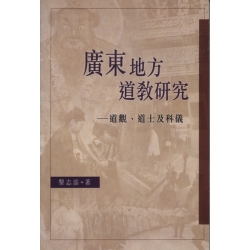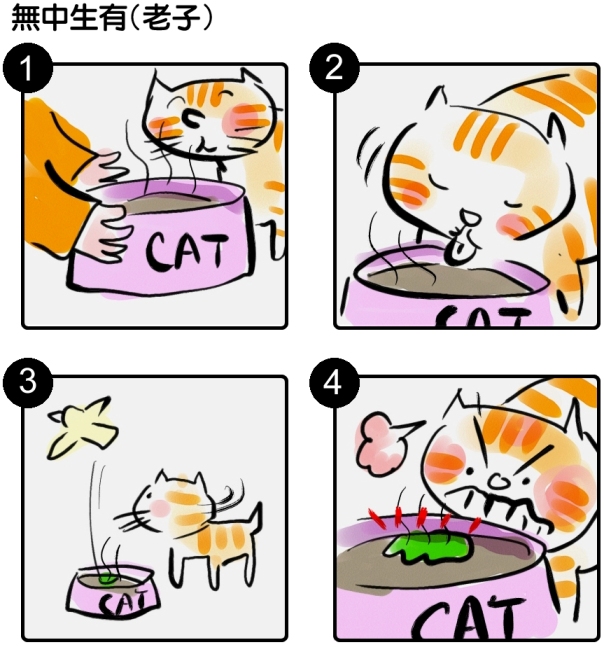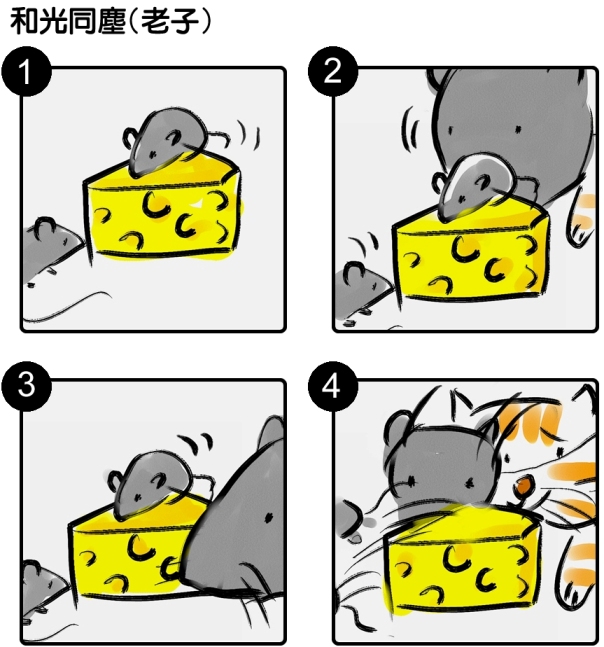廣東地方道教研究——道觀、道士及科儀
 |
|
序言一(中譯本)
承蒙我的朋友和同道黎志添教授之邀,非常榮幸能夠先期一睹黎教授新著,且忝為作序。
黎著於廣東地區道教研究所展示的廣度與深度,使我等得以一窺過去和現在的地方道教中,不同道派、不同道觀及其社會組織、不同道土及其科儀之生存狀態。廣東人之於近現代中國、乃至當今世界有偉大貢獻。黎教授所考鏡、辨章的廣東地方社會道教文化傳統,大可視為紀念此一偉大群體之豐功碑。
黎教授新著當之無愧為當今道教研究的前瞻性成果。作為一位宗教歷史學家和人類學學者,作者開拓性地將研究同時建立於歷史文獻與田野考察兩項基礎之上。而在此之前,為數不多的廣東道教研究,多局限於狹窄的社會學視野,或者只是單純的聞見筆錄。我們知道,若要理解中國本土宗教在形塑社會過程中的角色擔當,及其面對無常世態所表現出來的難以置信的適應能力,以及本土宗教豐厚的文化遺產與當下復興,就必得結合歷史學與人類學,對其進行歷史與現狀方面的考察。然而令人不無遺憾的是,迄於黎著之前,尚未見到有學者於斯著力,也或許是多數學者尚未具備足夠學力能達致此要求。中國民眾偉大的科儀傳統極少被研究涉及,其可能原因之一,乃是該傳統極難被研究者近距離窺知。黎著在文獻梳理與田野考察的資料對比中證明了,道教科儀乃是中國文化中最為持久且保持完好的傳統之一。許多道教儀式擁有長達兩千年之歷史,世代相承,迄今仍活躍於民間,綿延未絕。
同時,在中國漫長歷史的每個階段,新的儀式成分也在不斷添入。面對如此古老而富於生機的文化傳統,我們既需要道士們世代相承的科儀抄本,也必得仰賴明代道藏。然而在此浩瀚文集得以重印之前,研究者多無緣面覲其真容。而在道藏重光之後,理解道藏豐富內涵同樣耗費了學界漫長的歲月。我們知道,道藏的絕大部分為科儀而寫,學者必得理解科儀然後方能理解道藏,因此,活態道教傳統的田野調查對於理解道藏文本無疑為必經之路逕。該項工作目前尚在艱難行進之中,而黎教授大著之成就,無疑使得此進程向前邁進了一大步。黎著結合田野調查與文本考察的研究進路,可令我們更深切地理解何為道教、何為道教科儀、道教何以對中國社會如此重要、道教何以能在中國社會現代反覆巨變之中石立江心巋然不動。
道教儀式尤其是醮儀,與國家大禮極其相似。這種相似不僅僅表現為兩者的外在形態,更體現於對整個宇宙論框架的制定與表達。未來關於國家大禮的研究必將指出,天子的祭獻儀式及朝廷慶典在許多方面乃與道教科儀幾近雷同,而且還將指出,如此種種儀式可謂共建於道教宇宙論與神學基礎之上。此種相類亦體現於制度化框架之中。一如黎教授研究指出,道觀(如廣州玄妙觀、束嶽廟、城隍廟等)每每與國家崇拜中的官方祭拜場所融為一體,因此我們可以說,地方道教宮觀及道教科儀,實乃國家儀式在地方層面之延伸。國家儀式將正統性授予天子及其皇朝,道教儀式也随之將同樣的正統性授予包括朝廷命官、地方精英、家族領袖、社團、行會以及其他組織團體在内的地方領導階層,以與國家和天授神權保持高度一致。如此乃一極之完整的宗教結構,在此一結構之下,國家與地方系統得以和諧溝通,彼此結為一體。
此一系統之非凡之處在於,當1911年皇朝統治及其國家儀式終結之時,道教科儀並非如時人所預想般随皇朝而消亡。此一事實對於理解中國社會現代化進程有著至關重要之意義。正是基於此一認識,我們寄望於黎教授的研究能為未來的相關研究建立一種學術範式,俾有助於我們深入人類歷史上一個偉大的宗教和文化傳統。
施舟人
二零零六年十二月·福州大學西觀藏書樓
Foreword
If the mark of maturity in any scholarly discipline is its capacity for reflexiveunderstanding -- that is, an understanding of what it is about as a form ofintellectual inquiry, of the why, how, and for how long of that inquiry --then Professor Lai Chi-tim's new book represents a giant step in that processof maturation relative to the academic study of religion within a pre-dominantly Chinese context. Neither the topics and texts he has so astutelydiscussed nor the resolutions and conclusions he has offered are unfamiliarto scholars of religion in most parts of the world. What is highly original inthis book, however, is the deliberate union he has forged between"methodological concerns" and, where possible and appropriate, certaindata of Chinese religion(s). The book, let me hasten to add, is not aboutChinese subjects as such, but about what it means to be a student of religionand how the exploration of this question is pertinent to the person who isinterested in the specifc phenomena belonging to the Chinese tradition.
There are two assumptions underlying this book that further enhanceits strength. The first is one shared by virtually all scholars in the field, thatthere is no temporal privilege for religious data or phenomena. The senseof the sacred or the feel for its manifestation, if we want to make use ofsuch metaphors to denominate those phenomena, has co-existed with humancivilization itself -- both diachronically and synchronically, from its most"archaic" or "primitive" epochs and locales to the most "advanced" culturesand "post-modern" societies. This understanding directly confronts the manyforms of the theory of evolution that have been evident in a great deal ofmodern Chinese scholarship on religion, not all of them Marxist. Until weare prepared to confront the anomaly of how the homo religiosus can existquite meaningfully in the space and time of globalized technology, we willnever begin to comprehend the Chinese atomic scientist who is; also afundamentalist Christian, the Japanese cult leader who gases his own peoplewith Sarin in Tokyo subways, or the passions and terrors still emanatingfrom the events of September 11, 2001.
The second assumption evident in this book is that there can be noprivilege for religion in terms of either geography or culture. As aphenomenon of human culture, religion is larger than any single: ethnicgroup or national community, even for those religions intimately associatedwith particular or distinctive social groups. For one to speak meaningfullyof Judaism or Hinduism as a religion, that particular faith or tradition mustihave something in common with other faiths or traditions in order that itbe so classified. The dialectic inherent in this understanding of religion asbeing defined by overlapping elements of particularity and universality;also makes apparent that such an understanding can only come about as aproduct of scholarly reflection. ~ It is not a theoretical necessity for a religiousperson, a practitioner of a particular faith, to achieve an understanding ofreligion in general or even of that person's own faith in particular. Theacademic student of religion, on the other hand, has no other reason tbr hisor her standing and work as a professional other than the goal ofunderstanding. To reiterate a familiar analogy for illustration: the politicianis not obliged to be an expert in the subject of politics, although it may beuseful to such a person, but the political scientist by definition must have acomprehensive grasp of politics as a form of scientific knowledge.
These two assumptions also entail important ramifications for thestudent of Chinese religions, as Professor Lai's book makes apparent bothimplicitly and explicitly. With respect to the first, it means that ill principle,no religious phenomenon -- however strange, crude, popular, or evenviolent and grotesque -- should escape the scholar's notice and interest.Other people: may choose to refer to certain human acts and beliefs as"superstition,"' but this word does not belong to the vocabulary of the scholarof religion. Since religion by definition embodies elements of the universal.the second as;sumption makes apparent that the study of Chinese religioncannot be made identical merely with Sinology or Hanxue, the academicstudy of China engaged world wide for at least the last four centuries.Because the history of Chinese religions has revealed incontrovertibly thatthe ways of how a Chinese could be considered a religious person far exceedwhatever cultural, behavioral, or biological norms that can be proposed toclassify or define that person as Chinese, the need of the scholar forcomparison --- both intramurally within the vast span of historical Chineseculture and interculturally with external traditions far and near--becomesabsolutely imperative.
Recent scholarship has more than ever helped us perceive that religiouslife was vibrantly present for the Chinese even at as remote a time as 16,000 BCE.2 Despite the antiquity and persistent continuity of religious activities evident in all social strata down through China's long history, the study of religion as a general academic subject has had no place within an educational system, the primary and sole mission of which is to foster knowledge of both theory and ritual dedicated to uphold the institution of the imperial state. At different periods the Daoists, Buddhists and Christians all had established various forms of schooling, but none of these could survive as an alternative, let alone a rival, system of education to the dominant one, nor have the institutions of these three traditions been effective proponents, for understandable reason, of a serious engagement with the science of religion. As Professor Lai has made clear in his "Introduction," there is urgent need for the Chinese student to know why and in what way certain ideas and methods from the Western academy may be appropriated for the task at hand. Thus a survey of the history of the discipline a practiced by the academy of the West, however brief, can be useful.
Because understanding is the primary goal of the work of the religionscholar, Professor Lai's book rightly concentrates on some of the figures,texts, methods, and schools of thought that have contributed crucially tothis undertaking. Hermeneutics, defined as an activity fostered by thepractice of law, religion, and literature, is for this reason the unifying topicof the book, because its two-fold labor of explanation and interpretationproperly defines the activity that has understanding as its supreme objective.The course of crafting this coherent and compelling account of this activityand its relevance for the science of religion within the domain of the humansciences demonstrates amply not only the author's mastery of an impressivearray of critical literatures both Chinese and Western but also some verythoughtful translations of key texts and terminologies. Chinese studentsshould count themselves fortunate to be able to learn from such erudition. Anthony C. Yu The University of ChicagoProface
Preface
It is with great pleasure that I accept the invitation of my friend and colleagueProfessor Lai Chi Tim to write a few words of introduction to his book onTaoism in the Guangdong area. The present work is a full, in-depth study of allmajor aspects of Taoism in the Guangdong area. It enables us to gain anunderstanding of the past and present Taoist orders and schools, the templesand their communities, the priests and their liturgy. The people of Guangdongoccupies a prominent place, not only in modern China, but also in the entirepresent-day world. Professor Lai's scholarly achievement stands therefore as amemorial to the great religious and cultural traditions of this people.
This is a truly pioneering study. For the first time, a historian of religion who is also an anthropologist has based his research on the historical documentation as well as on fieldwork observation. Hitherto, the few existing studies on Cantonese Taoism were always confined to a narrow sociological approach or were of a purely documentary nature. However, in order to understand China's indigenous religion, its paramount role in shaping society, its incredible resilience in the face of adversity, its great cultural legacy and present revival, it is necessary to combine both history and anthropology. Until now, no scholar has met the challenge----or did possess the ability--to doing so. One of the possible reasons why the great liturgical traditions of the Chinese people have been so little studied is because they were difficult to approach. As the present book bears out, Taoist liturgy is one of the most enduring and well-preserved traditions in Chinese culture. Many of the rituals that are still performed today can be shown to have existed for as much as two thousand years in the least. Many have remained the same, yet at the same time, at each period during China's long history, new elements have been added. The indispensable source for the study of the living tradition is, next tothe liturgical manuscripts of the Taoist Masters, of course the Taoist Canon ofthe Ming dynasty. However, until the modern reprints of this immense collection,it was completely unavailable for study. After it became available, many decadeswere necessary to study its contents. It then became clear that the greater partof the Taoist Canon was devoted to liturgy, and that fieldwork--the study ofthe living tradition——was absolutely necessary to understand the texts of theDaozang. This work is now under way, and with the present contribution ofProfessor Lai, a great step forward has been made.
With this combination of fieldwork and textual research, we also gain abetter understanding of why Taoism, and its liturgy, was so important toChina' s society and therefore why it could withstand so many adversities whenChina underwent its great transformations of modern times. Taoist ritual,especially the solemnjiao rites, are remarkable similar to the rituals of theilnperial court. This is not only true for their outward appearance, but also forthe overall cosmological framework that is enacted and given to see. As futurestudies on the great dynastic rituals (guojia dali) will certainly show, thesacrificial rites of the emperor and the court ceremonials are in many respectsbasically similar, and share a common fundamental cosmology and theologywith, the Taoist liturgy. This similitude can also be observed in the institutionalframework. The temples that are studied by Professor Lai, such as the Yuanrniaoguan, the Dongyue miao, the Chenghuang miao, etc., were all official places ofworship that were completely integrated in the State cults. As such, the Taoistsanctuaries and their liturgy were in fact a prolongation of the State ritual onthe local level. Whereas the State rituals conferred legitimacy on the Son ofHeaven and his dynasty, the Taoist liturgy conferred, in harmony with the Stateand its Mandate of Heaven, the same legitimacy to the local leadership, eitherto the members of the imperial administration, or to the local elites, the headsof the lineages, the corporations, guilds and other recognized groups. This wasa perfectly integrated religious organization, by which the State and the localsystems could communicate and celelerate their unity in harmony.
The most remarkable of this entire system is that when the imperial ruleand its State rituals were ended in 1911, the Taoist liturgy did not disappearalso, as many at these times thought it would. This fact is of utmost importancefor the understanding of China's evolution in modern times. It is therefore to behoped that Professor Lai's study will open the way for many more similarresearches in the future, as they will greatly benefit our understanding of one ofthe greatest religions and cultural traditions of mankind. Kristofer Schipper
Fuzhou University Library of the Western Belvedere
1 December 2006
序言二
清初廣東沿海,禁海令施行,新界鄉村都遷徙內陸,等到康熙二十:幾年以後,錦田鄧氏等新界五大宗族才回到新界舊地,從新再組鄉村秩序。那麼,可以推測,這大宗族回鄉,經過一段時間以後,為了使鄉村穩定,開始邀請道士而作超幽建醮。至此內陸的道士們才能進到沿海鄉村來開始其宗教活動。如此,香港新界的超幽建醮,要等到清代中葉以後,才有了條件崛起。但是,其具體的細節,學術界一點都不能得知,是研究史上的一大空白。先看廣東地區超幽建醮的記錄。
香山縣小欖鎮,嘉慶甲戌以來,每六十年一次,舉行菊花會。雖然稱為花會,但是建立大壇,邀請僧道,超度孤魂。可說是打醮或太平清醮。這打醮,其實乾隆世代有其萌芽。道光七年刊《香山縣志》卷八<事略>條所云:
會無定期,自乾隆壬寅為初會,辛亥第二會,嘉慶甲戍第三會,時和年豐,又值是歲,花事倍勝則為之。
由此得知,乾隆壬寅(1782)第一次會,乾隆辛亥(1792)第二次會,嘉慶甲戌(1814)第三次會。似乎是十年一次,或十二年一次等,很像目前香港常見的習俗。但第四次是同治甲戌(1874),第五次是民國甲戌(1934),是變為六十年一屆。相同於上水廖氏六十年大醮。革命以後,就喪失超度孤魂這宗教色彩,第六次是1959年,第七次是1973年,第八次是1979年。規律性已經沒有了。但據此可知,廣東地區,乾隆時代,18世紀末期已經開始建醮祭祀。
新會縣潮連鄉有十年一次大建醮的習俗。盧子俊撰《潮連鄉志》(1946)所云:
僧道設壇祈禱,謂之醮。宋史所謂『設黄錄醮,仰祝聖壽』者,則其來已久矣。我潮連洪聖殿,每年由水陸暴會友,建醮一壇,以酬神恩。延僧道誦經,水陸超幽,而為鄉人祈福祥。此事百十年來,有舉莫廢,而十年一次之大建醮,則其條理之紛繁,氣象之宏偉,迄今思之,猶令人神游而目想也。
這裏所說,每年有小建醮,其中十年一次有大建醮。百十年來,沒有廢止。那麼,1840年前後已經有建醮了。是道光年代開始的。比小欖稍微晚起。還有一種資料值得注意。海豐縣鹿嶺鄉的世族呂氏保存有《呂氏世譜》(殘缺抄本),其中錄有該族十四世祖呂學義<論建醮陋規>,他生於康熙五十五年(1716),卒於乾隆三十五年(1770),因此這文章寫在乾隆前期(1750前後)。所論陋規七條,如下:
其一,醮榜。建醮之事,覆載先成之德,欲酬無方,聊借齋醮,報答天恩于萬一耳。(中略)則醮資多寡可不必論,而惟誠可以格天。名分豈容倒置,無禮焉能獲福。乃觀今之醮榜,惟利是視,以喜題之多寡為上下。是長幼失序,將鄉黨論齒之謂何。是禮教出自先王,秩敘本乎天則,而因財倒置,神其許我乎。願後之列榜者,勿以貨取,知所先後,則近道焉。
其二,洗街。醮之多事也,皆由邪巫惑人。(中略)蓋司巫將欲建醮,必先洗街。夫道衢曲巷,誰能洗之。即欲洗焉,則宜于水利于掃,何必搖鈴群游而洗乎。搖鈴而洗,鈴聲一響,濁穢盡除,是神仙未聞有用此之術,而邪巫獨擅飛塵之巧,何不持鈴待聘,效力車前,掃淨疆宇乎。噫,人何易惑至此也。(下略)
其三,行香。行香之設,所以敬神也。(中略)從來建醮,誰無醮場,舉祀仙佛神將,俱設壇中,即社神地鬼,亦請入壇內。焚香誦經而禱之,則馨香既達于鬼神,又何事于沿途而行之。(下略)
其四,獻齋。(中略)夫獻齋,豈獻物哉,獻心耳。若泥其物耳獻于神所,上帝宜獻于天庭,龍王宜獻于海噬,且十方聖眾,必求其地以實之。而豈能以一獻共之耶。在邪巫或因行獻之稜,兼味可飽,名雖獻神,實為自獻也。(下略)
其五,讀疏。(中略)有錢有米之司命,願來聞疏。而無錢無米之司命,獨隱几而臥乎。此乃邪巫射利,人所易知。(下略)其六,放生。放生者何。眾人以龜一鳥一,送之山顛水涯,巫人念經而放之也。(中略)而致多死之龜鳥,誰之罪也。由此觀之,放一生龜鳥者偽也。害死眾龜鳥者真也。(中略)倘謂龜鳥聞經而能保其身者,吾不之信也。(下略)
其七,赦書。(中略)我若無罪,其何容赦。若既有之,獲罪于天,無所禱也。其誰能禱之。使讀赦書之後,無忌之徒,恣意橫為,(中略)則是教人為非作歹,奸倫犯義,無所不至者,皆由讀赦書誤之也。(下略)
在香港新界也有相同的證據。比如,元朗大樹下天后廟,民國二十七年重修碑記,云:
滿清康熙八年,大墩橋市場改遷元朗。乾隆中葉,鄉人因谷況勝訴,開演梨園,嗣後,三年一届。止此三間廟址,實不足容納群伶,道光丙辰年由朱柏軒大學倡議,將三間廟廊擴而為五,左為英勇祠,右為花廳。
您的評論: 注意: 評論內容不支持HTML代碼!
顧客評分: 差評 好評
請在下框輸入驗證號碼:




